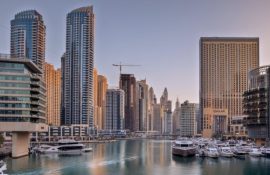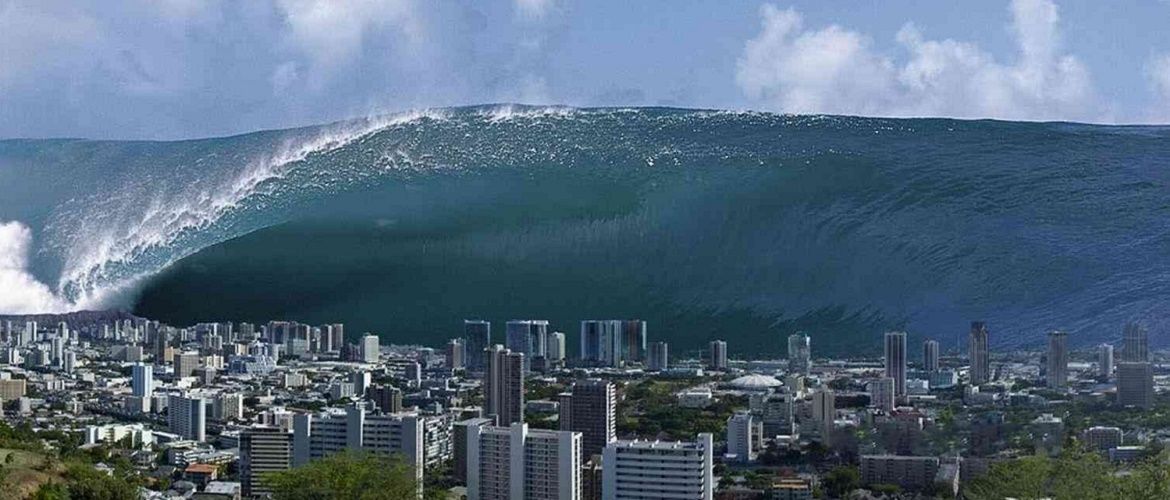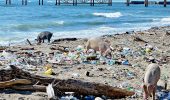Imagine a huge wave with a height of a 12-story building rushing to the shore and crashing into the city, destroying houses, bridges, uprooting trees, blowing cars, sweeping away people, animals, and civilization in general. A lot of films were shot about this powerful force of nature. Among them «The wave», «The impossible», «El Barco», «Als de dijken breken», and others. Only a tsunami is not a fairy tale or scriptwriters’ fiction, but a real deadly natural.
Joy-pup editorial team has studied the geographical spread of the tsunamis in the world and found the largest waves that appeared over the last 10 years – from 2009 to 2018.
Samoan Islands – wave height 15 meters

Samoa is a small island state in the Pacific Ocean that suffers from natural disasters once in a while. In 2009, a powerful wave with a height of 15 hit the islands and went several kilometers into the country. It destroyed many villages and left about 189 people dead. There could have been more victims, but the Pacific Warning Center informed about the impending danger in time, so most of the population was evacuated to an upland.
The terrible tsunami was caused by an earthquake of magnitude 9, which took place at 7:00 in the morning. People woke up, started cooking breakfast and getting ready for work when it happened. It’s like declaring war, only there’s no point in struggling with the enemy.
Japanese archipelago – wave height 7 meters

A terrible tragedy happened on the Japanese islands in 2011: a giant wave more than 7 meters high immersed several kilometers of land and claimed the lives of more than 20 thousand people. The tsunami was caused by a devastating earthquake of magnitude 9.1 points, which occurred 70 km from Japan. It took only about 10-30 minutes for the waves to reach the islands and to overwhelm the entire coast of two continents: from Chile to Alaska.
It was noted in the journalistic reports that the wave height reached 40 meters. We double-checked many sources and found that the maximum wave height was not more than 7.3 meters. In any case, considering its tragic character and consequences, this natural disaster is one of the largest in the history of Japan.
Philippine Islands – wave height 6 meters

6 meters? It’s not high enough, you would say. Previous record-breaking tsunamis reached 8 and even 15 meters in height. Whichever is true, this super typhoon in 2013 spread over 600 km and obliterated many towns. The city of Tacloban was completely destroyed, having no chance for reconstruction.
The tsunami caused the death of more than 10 thousand people. There could be fewer victims if the quality of buildings and roads wasn’t so poor. Schools, churches and government institutions selected as shelters could not stand the pressure of the water, and because of the washed out and destroyed roads, many disaster areas were beyond rescuers’ reach for a long time.
Chile – wave height 5 meters

In 2010, Chile was unlucky twice: first, a powerful earthquake of magnitude 8.8 hit the country, then, as a result, a tsunami up to 5 meters high was raging there. A huge column of water swept through 11 coastal cities, destroying everything on its way. The total number of victims in the disaster is more than 800 people. Another 1,200 were missing. Most of the people died during the earthquake, after which many citizens managed to evacuate to the mountains.
The tsunami was raging not only in Chile but also in other countries: Japan, Australia, New Zealand, and even Russia. Waves at a height of 90 centimeters were recorded in Kamchatka.
In 2014, Chile was overwhelmed by a new 2 meters high tsunami, but residents were able to evacuate earlier, so the death toll mounted to less than 10 people. But the waves destroyed the walls of the women’s prison, so 300 prisoners escaped.
Indonesia – wave height 2 meters

The disaster was caused by an earthquake. Its magnitude was 7.4-7.5 points, which was enough to destroy many coastal towns. About 1,400 people died, 2,500 were injured, and 90,000 lost their homes.
The largest number of victims was in the city of Palu on the island of Sulawesi, where a large ethnocultural festival was held. There is a video on Twitter where the waves suddenly blow the stage and the musicians:
While we were studying the aspects of each natural disaster, we realized that often the cause of numerous deaths lies not in nature, but in the poor preparation of the authorities for its surprises. It’s sad and unfair. Now we don’t have the desire to rest on the Pacific islands anymore. What about you?







Only registered users can leave comments